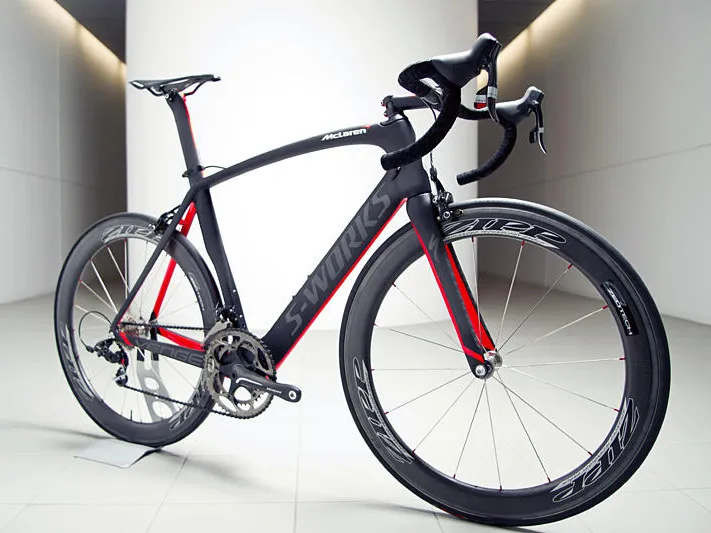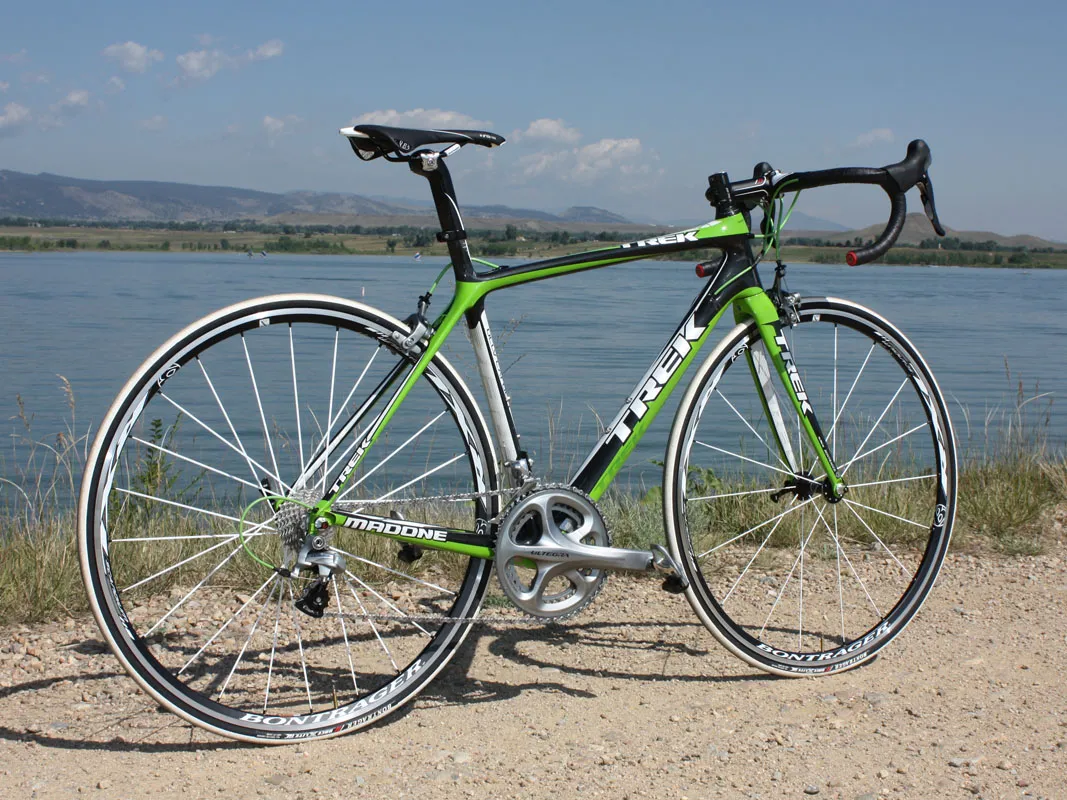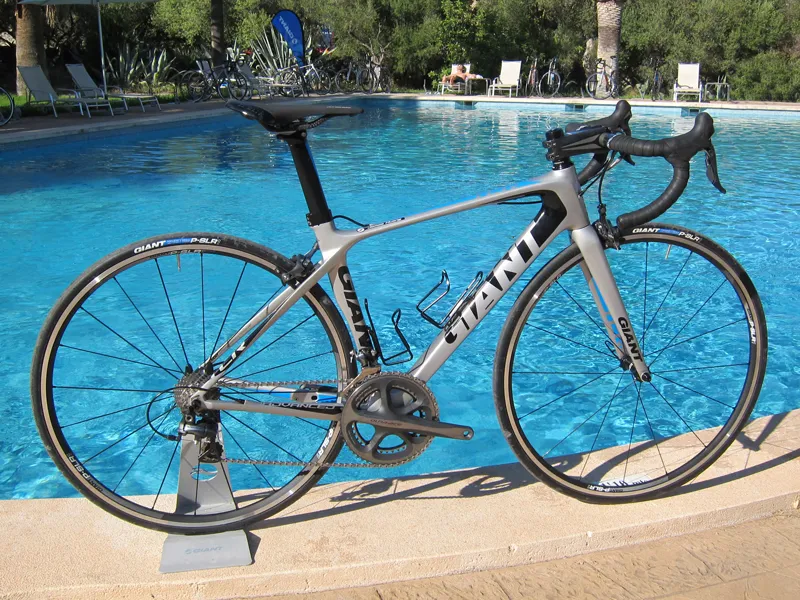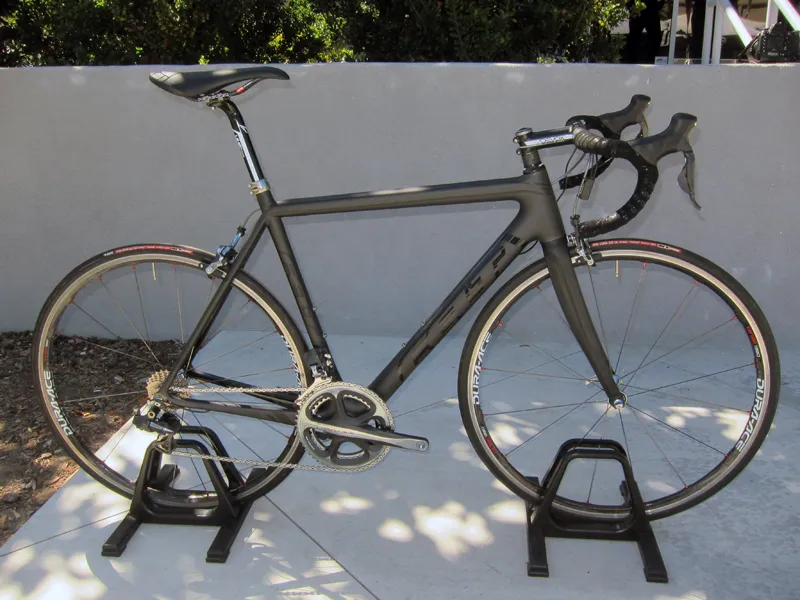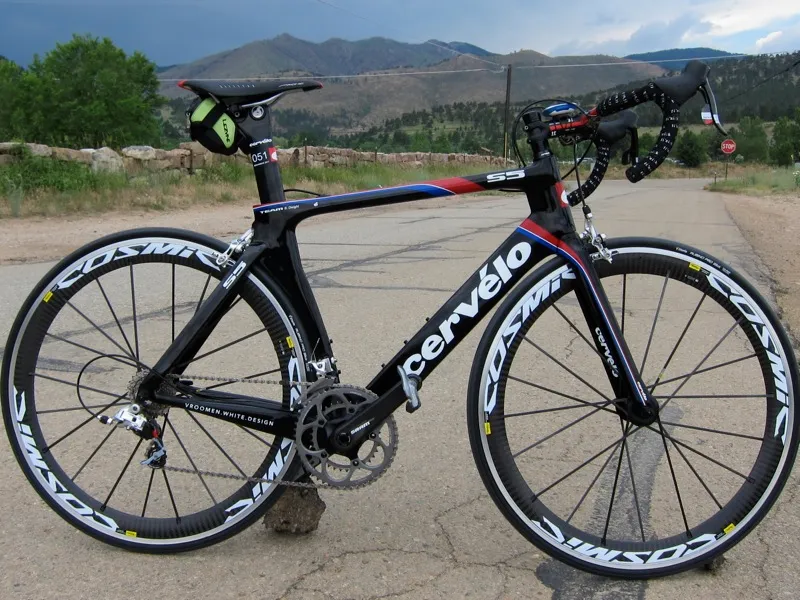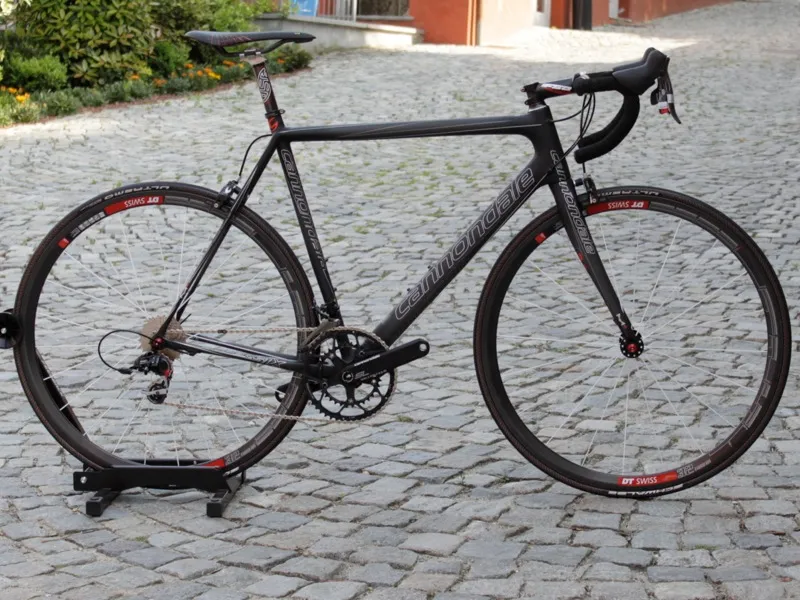We've all seen or read about them, and some have even been lucky enough to ride (or better yet, own) one: those ultra-premium 'halo' bikes that are cycling's equivalent of that old Lamborghini Countach poster on your childhood bedroom's wall. These days, nearly every company has at least one in their range – but if only a handful of people can afford them, what's the point?
Consider the following examples:
- Cannondale SuperSix Evo Ultimate: US$12,100 (£8,800)
- Felt DA1 Di2: $12,999 (£6,599)
- Giant TCR Advanced SL 0: $10,300 (£7,499)
- Trek Madone 6.9 SSL Leopard/Schleck Edition: $11,623.47 (£8,500)
- Specialized S-Works Tarmac SL4 Di2: $11,000 (non-Di2 UK version is £6,000)
- Cervélo R5ca: $9,800, frameset only (£7,500)
Fantasy for some; reality for others
Halo bikes cost roughly one-fifth of the average US household income – meaning they're the stuff of dreams for most. But as unattainable as those bikes seem, there are people who can and do buy them. BikeRadar spoke with several of the top companies in the industry and all of them reported that flagship bike sales – while low in total number – are still ticking along, global economic issues be damned.
"We find it’s more of the affluent (doctor, investor, lawyer), performance-minded customer that purchases a bike at this price range," said Andrew Juskaitis, global product marketing manager for Giant. "Because of their price, the number of halo bikes produced is dwarfed by that of their more-affordable counterparts – the ratio is about 40:1."
"I won't disclose how many total we make," said Scott PR and marketing director Adrian Montgomery. "But for the US market it's a 1:10 ratio of sales of halo bikes versus our value bikes, like Ultegra CR1s. We entered the market at the high end and there's still considerable demand for our premium bikes even after we've focused on value for the US market."
Even industry powerhouse Specialized – no strangers to mass production and huge volume – say sales of their impressively broad range of halo bikes are better than expected. The company's top-end road bike, the S-Works McLaren Venge, is a joint collaboration with the heralded automaker of the same name and costs $18,000 (£12,000). Their most expensive mountain bike, the S-Works Epic Carbon 29, isn't quite as outrageous but still commands a whopping $10,500 (£7,200) – and the company can't keep either one in stock.

Scott offer a full range of their impressive Foil aero carbon road bikes. Top-end ones get premium kit and the highest grade carbon fibers while midrange ones use a more economical spec and a slightly heavier fiber blend that doesn't detract too much from performance but saves an enormous amount of cash
It's not always about volume
Halo bikes don't always make economic sense but manufacturers still feel they hold a valuable spot in the marketplace. Their lofty prices (and presumably, the associated impressive performance) can raise the perceived status of the brand, bikes developed for sponsored teams can earn prized competition credibility, and developers learn valuable lessons while pushing the envelope of technology.
"We build halo bikes to see how far we can push our product line – literally building what we feel are the best bikes in the world for that one to two percent of riders who desire the very best, to see exactly how light, how stiff and how aerodynamic we can push our overall bike designs," said Juskaitis. "Every time we produce one of these bikes we learn something new. Sure, the great majority of us can’t afford them, but these are the products we aspire to."
Flagship bikes are also developed to cater to sponsored world-class riders and teams. Their physical demands far exceed the daily rigors of most everyday riders and as is always the case in sport, teams are looking for every possible advantage over their rivals. That unique microcosm provides an ideal testing environment and continually forces everyone involved to push the envelope instead of contently settling for the status quo.
"Working with our teams and athletes is how we build better products," said Sims. "The average person on the street will not have the power of a Mark Cavendish so we need their numbers and feedback. As a company, I think we've built a great reputation for being able to interpret that feedback and put it to good use to build the next great bike."
"There absolutely needs to be halo bikes in order to push the limits of what's possible," insisted Cervélo media liaison Mark Riedy. "It's not realistic for a manufacturer to be able to come out with a frame that weighs 25 percent less and is stiffer than the current base production models without rolling it out as a super-limited production model. We just can't jump into massive production right away with cutting-edge technology."
"One thing that might be getting lost these days is the sense of how special a carbon frame is," Riedy added. "We make very few R5ca frames and they're all just as fussed over as an artisan-made steel frame. They're handmade and are as cutting edge as anything you'd see in F1 or Moto GP racing."
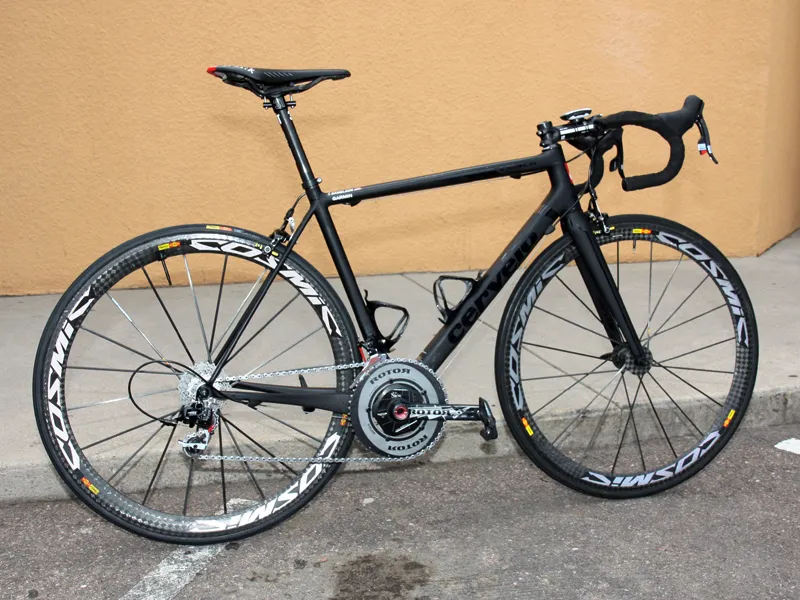
Cervélo's ultra-exclusive R5ca is one of the lightest road frames currently available and is built in the US by company engineers – not factory workers. Unfortunately, it's also one of the most expensive at $9,800 for just the frameset
Why halo bikes help all of us
There are probably regular riders out there who can churn out as many watts as a Tour de France pro but odds are the average rider's power output wouldn’t even run your washing machine. That person might not be able to extract all the performance potential from a halo bike but that doesn't mean we don't all still stand to benefit from their existence anyway.
Invariably, those new technologies trickle down to more attainable pricepoints as manufacturers figure out ways to reproduce those features at lower costs and amortize development expenses over a wider volume of product.
"Halo bikes are where the latest technology comes from and these are the product used by our athletes and teams," Sims told us. "Ultimately, what gets developed on the halo bikes will trickle down to the more affordable models. If you take for example our Allez bikes, they're entry-level but these frames are stiffer than the frame that Levi Leipheimer used to win the Tour of Germany a few years ago."
"Many of the technological benefits that our engineers develop can be carried down to non-halo bikes," said Felt communications manager Bill Childers. "The more that we can pull down to the rest of the line, the better the bikes are for our customers. We developed the InsideOut process [for the F1] and reverted to a more efficient round tube design but we were also able to utilize the same process and round tube design for the F2-F5. So, as a result of seeking to produce the fastest bike possible, we're also able to raise the performance of all the bikes in our line."
"The dream bike we offered five years ago is now a value bike – without carbon tubulars," added Montgomery. "[Customers] find they can own the Addict with Ultegra and it rides so close to the Di2 bike that it's a great value and half the money."
You can buy a car for that money! I can go faster on my old Huffy!
Any discussion of such high-end exotica invariably elicits the usual laundry list of comments from the peanut gallery:
- "That $10,000 bike isn't twice as good as a $5,000 one"
- "I can go just as fast on my 1980 Peugeot – only the legs matter"
- "The average rider has way more weight to lose on their body"
- "That bike isn't UCI-legal anyway"
- "You could buy a motorcycle for that money"

A team replica Trek Madone 6.9 SSL Leopard/Schleck Edition similar to this one will cost you $11,623.47 at full retail
Guess what – it's all true. But so what. This end of the price spectrum brings sharply diminishing returns, no bike is a substitute for true fitness, few of us are as fit as we could be, most of these 'superbikes' (on the road, at least) fall well south of the UCI weight limit and yes, the same amount of money will buy either a top-end Cannondale or a Ducati 848 Evo.
As with any gear-oriented sport, people just like to have the best – if only for the illusion of competitive advantage – and some of those people have the money to spend. Moreover, many buyers don't make their bicycle purchases based on how well it suits their abilities. Truth be told, we often buy based on what we want to be and the image we want to project. Just like many people own cars that can go 240km/h in a world that rarely lets them go half that, it's the idea that it's capable of such a feat that we find so compelling.
Top-end bikes are also cheap in the grand scheme of expensive playthings. Consider that one typically needs less than $10,000 to buy the exact same machine as top pros are using and then compare that to motorsports, where that same amount of money gets you a used Honda Civic. Sure, that Ducati nets a heck of a lot more speed per dollar than any bicycle but it's not the best. If you're truly after the exact same equipment as the pros, we dare say that Valentino Rossi's machine might cost just a little extra.
Where we go from here
There's some indication that we're approaching the glass ceiling – but limits are meant to be broken. "At about $12,000, the bikes don't lose much weight and just look more exotic," Montgomery admitted. "I remember someone asking why our RED Equipped LTD a few years ago didn't include ceramic bearings. Well, we drew the line – $13,000 was too much and a ceramic bearing is invisible."
"In 2010, the $14,000 TCR Advanced SL Limited was the most expensive bike we'd ever produced," said Juskaitis. "We sold out of these bikes in less than a month [but] for the foreseeable future, this is as high as we'll venture."
Specialized, on the other hand, won't artificially limit themselves but say any price increase will have to come with a real gain. "We'll always look to the next great piece of technology and that generally comes at a premium, so as long as we keep riding and pushing ourselves to develop better bikes we'll keep going," said Sims. "Obviously frames are just one part of the equation, so if parts prices go up then bike prices go up, too."
As with anything that lies out of our financial reach, halo bikes aren't there to taunt us, mock us or remind us of what we want but can't have – they exist simply because they can. Moreover, no one's forcing anyone to buy anything and whether directly or indirectly, we all benefit. So go ahead and rightfully take pride in your current machine, knowing full well that you'll eke out its full potential. When it's time, though, rest assured that there'll be always something better waiting for you when you're ready.
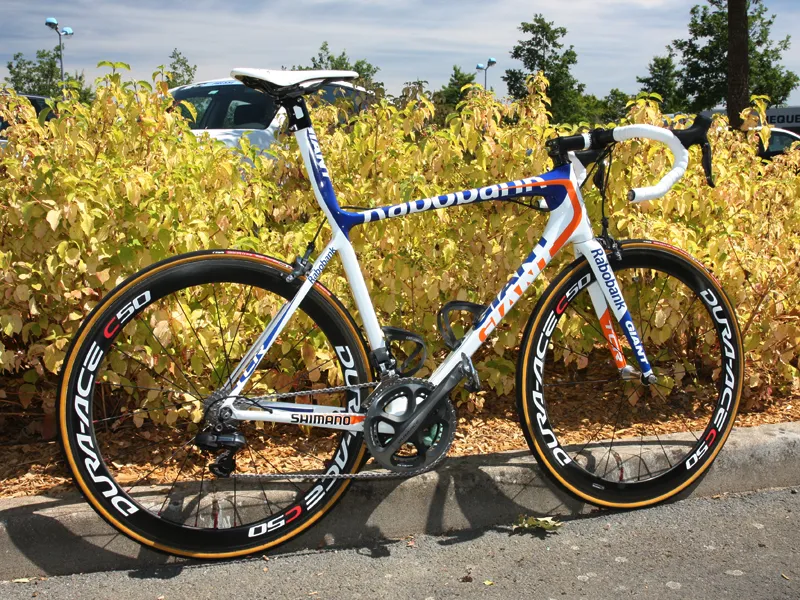
Giant Bicycles once built their business model on offering primarily mainstream bikes with exceptionally high value. Now the company also offer top-end race bikes costing upwards of $10,000 like this Rabobank team-issued machine

